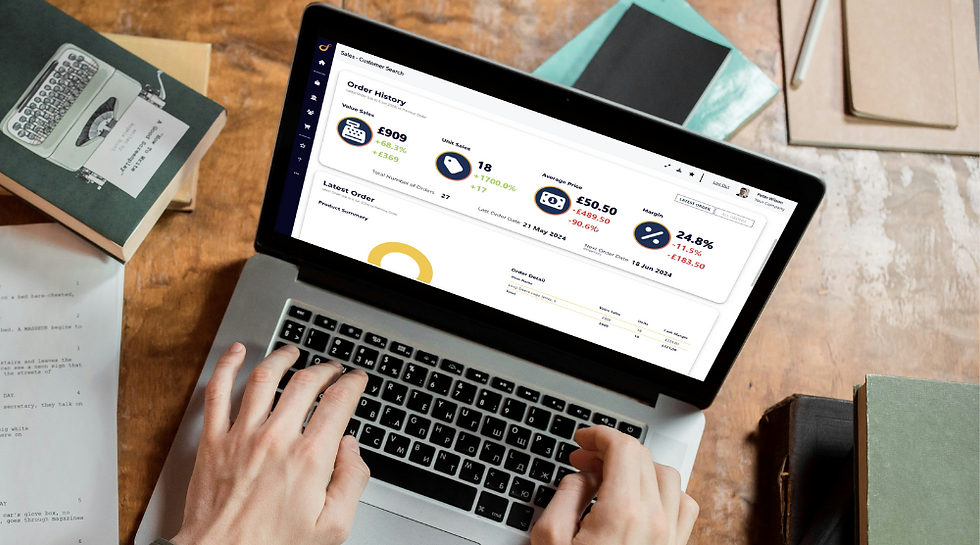Picking the right BI tool for your business
- Chris Farr

- Sep 7, 2020
- 4 min read
Updated: Apr 6, 2021

In this article I am looking at how to go about picking the right BI tool for your business. This is not designed to be a comparison between all of the different tools, as there are many very good comparisons already out there. There are also articles that claim to tell you which Business Intelligence tool is best, even though they don’t know about the unique requirements of your business.
What I do want to focus on some of the things that you should look out for, some of the things that might matter to your business so that you can make the right decision for your cloud reporting solution.
What do the experts say?
As much as I don’t want this to be a comparison of different BI tools, it is worth us looking at what the Gartner Magic Quadrant for analytics and business intelligence platforms looks like for 2020. In this Gartner look at 22 different business intelligence tools and rank them based on a comprehensive list of criteria. This can help provide a good starting point if you aren’t sure who the main BI players are.

Can you connect to your data directly?
The first and most important point you should consider is whether you can connect your data to your BI tool of choice. This may sound like something that all BI tools have covered as surely they can connect to you data, but not all of the tools that you see out there can connect to your data in the same way.
Many of the tools will be able to connect to your data natively, i.e. they can connect directly to your data from within their platform. Others will require an additional connector to pass the information through. In other words, some tools will go be able to pick your data up from its source, others will need someone else to go and get it for them.
You may also think that as you use a system like SAP, Oracle, or Salesforce it may seem intuitive to use the Business Intelligence solution that they provide, as surely you can connect correctly and get using our data faster and more efficiently? This may be true, but many of the top BI tools will also connect directly to these systems and allowing you to access your data in their system too.
The real question here is around what other data sources you have and whether you can connect all of the data in your business to your new BI tool in the way that you want to.
Depending on your business, your IT set up and security requirements using a 3rd party connector may or may not be a problem, but this will help you narrow down your choices.
Does security meet your requirements?
All of the top BI Tools will have strong security credentials, as this is one of the key considerations for businesses, so the top tools don't want to compromise on that. The main differentiator when choosing the right BI tool for your business is whether you and your company are happy with the security that the tools provides and whether that adheres to your internal IT policies.
If not, then you can strike it from your list.
Check out my previous article on keeping your data secure in the cloud.
Intuitive user experience
Before you commit to your new BI tool, just think that you and your business are going to be using this every day to consume your data. How the tool works for an end user is going to be vital to the adoption of the system.
If you can trial the software, or view a demo, how much training is required for someone to be able to pick it up and use it? Are there any annoying nuances that mean you must find work arounds to how you would want to use and view your reports?
No tool is going to be 100% perfect for every user. There are always going to be details that some people won’t like, but having the ability to provide the best intuitive user experience, based on your businesses requirements, will go along way to getting the most out of your reports across your business.
Report Development
The process of developing reports needs to be as intuitive as the end user experience. This is an important factor if you are developing new reports in your chosen BI tool.
If you want to empower members of your team to be able to create reports themselves then you need the process of report creation and data visualisation to be simple and straight forward. This way you’re more likely to be able to have these members of your team learn this and be able to provide reports without specialist developer help.
On the other hand, if you don’t have the appetite in your team to create their own reports, or you want to maintain control of the reports that are produced in your business then having a simple data visualisation process may be lower on your priority list.
And finally
Picking the right Business Intelligence tool for your business needs to be based on your own business requirements. This means that understanding what you are looking to achieve with your reports and how you want to use them in your business should be at the heart of your decision.
At Sontai, we have worked with many of the top BI tools but do much of our work with Microsoft Power BI. This is not only because they have been considered as a leader in analytics and business intelligence from Gartner, but because Power BI comes with many out of the box features that our partners are looking for.
Putting our partners business requirements at the centre of the decision process means that we can offer the best solution to them, and in order to make the right decision for your business, you need to do the same.
Want to know more? Talk to one our team today.
Up next:
Next in our blog series, Cutting the Cord, we will be looking at ‘The critical role that adoption plays in the success your cloud reporting’.



